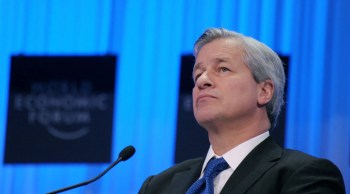Making safe deposits at your bank
TEXT OF STORY
Tess Vigeland: Ready for the rundown or should we say the write-down? Wachovia: $8.6 billion second-quarter loss. Washington Mutual: $3.3 billion — that’s a lot of WaMulah. SunTrust of Atlanta, Fifth Third of Cincinnati: All delivered miserable earnings this week.
Of course, bank stocks rallied on the news — chalk it up to investors who had too much Honey Nut Cheerios and are certain, just certain, that the worst may be over…
Until tomorrow.
Meanwhile, what’s a bank depositor to do?
Here’s Marketplace’s Mitchell Hartman.
Mitchell Hartman: First off, it depends how much money you’ve got in the bank. John Mitchell is former chief economist at U.S. Bank in Portland. He says if it’s less than $100,000, the FDIC has you covered.
John Mitchell: The vast majority of people are protected by deposit insurance and if you have under the limits, there’s basically nothing to worry about.
That’s easy for him to say, but we bank customers are getting bombarded by news that makes us decidedly jittery.
Then there’s the email I got last week from a local community bank. It tried to reassure me that the bank’s balance sheet is fine and depositors’ money is safe, which didn’t make me feel much better. So I thought I’d check in with the bank’s president. Dave Williams is with Shorebank Pacific. I asked him how to tell if a bank’s healthy.
Dave Williams: So you want to know your bank is well-capitalized, which means it’s got more equity available in the event of some hit that they have to take in earnings.
In other words, has your bank got enough in its bank to weather a crisis like some loans going bad or the assets it owns losing value.
Williams says it’s also worth checking to see if your bank’s already in trouble.
Williams: Is the bank operating under a memorandum of understanding with the FDIC or a cease-and-desist order? Now, you look at… there are something like 7,800 banks in the United States today. 99 of them are on a watch list, so that’s a really trivial amount of banks that are on a watch list.
Slightly above 1 percent, in fact. That number may be small, but Jane D’Arista of the Financial Markets Center says depositors shouldn’t be complacent. They should look beyond the money they have in savings accounts and CDs. She says if a bank fails, depositors will eventually get their money.
Jane D’Arista: But in many cases these depositors are also investors, whether they know it or not. If they have pension funds then their pension funds are probably invested in bank stocks. If they become worried about the banks, of course that is going to bring the bank stocks down further. So one way or another, the average American, the middle-class American, is being deeply affected by this financial crisis.
And all the banking folks I talked to agreed there’s likely to be more quarterly losses, more banks in trouble and possibly even more bank failures as the financial crisis runs its course.
In Portland, I’m Mitchell Hartman for Marketplace.
There’s a lot happening in the world. Through it all, Marketplace is here for you.
You rely on Marketplace to break down the world’s events and tell you how it affects you in a fact-based, approachable way. We rely on your financial support to keep making that possible.
Your donation today powers the independent journalism that you rely on. For just $5/month, you can help sustain Marketplace so we can keep reporting on the things that matter to you.


















